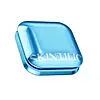What's inside
What's inside
 Key Ingredients
Key Ingredients

 Benefits
Benefits

 Concerns
Concerns

 Ingredients Side-by-side
Ingredients Side-by-side

Water
Skin ConditioningCyclopentasiloxane
EmollientTitanium Dioxide
Cosmetic ColorantEthylhexyl Methoxycinnamate
UV AbsorberCyclohexasiloxane
EmollientGlycerin
HumectantPhenyl Trimethicone
Skin ConditioningCetyl Ethylhexanoate
EmollientCetyl PEG/PPG-10/1 Dimethicone
EmulsifyingPropylene Glycol Dibenzoate
Skin ConditioningEthylhexyl Salicylate
UV AbsorberMethyl Methacrylate Crosspolymer
Pentylene Glycol
Skin ConditioningDimethicone
EmollientPEG-10 Dimethicone
Skin ConditioningZinc Oxide
Cosmetic ColorantMagnesium Sulfate
Phenoxyethanol
PreservativeSilica
AbrasiveTrimethylsiloxysilicate
EmollientDimethicone/Vinyl Dimethicone Crosspolymer
Skin ConditioningAluminum Hydroxide
EmollientBetaine
HumectantDisteardimonium Hectorite
StabilisingTriethoxycaprylylsilane
Stearic Acid
CleansingEthylhexylglycerin
Skin ConditioningDisodium EDTA
BHT
AntioxidantAllantoin
Skin ConditioningCaffeine
Skin ConditioningCI 77491
Cosmetic ColorantCI 77499
Cosmetic ColorantHydrolyzed Sodium Hyaluronate
Skin ConditioningCI 77492
Cosmetic Colorant1,2-Hexanediol
Skin ConditioningWater, Cyclopentasiloxane, Titanium Dioxide, Ethylhexyl Methoxycinnamate, Cyclohexasiloxane, Glycerin, Phenyl Trimethicone, Cetyl Ethylhexanoate, Cetyl PEG/PPG-10/1 Dimethicone, Propylene Glycol Dibenzoate, Ethylhexyl Salicylate, Methyl Methacrylate Crosspolymer, Pentylene Glycol, Dimethicone, PEG-10 Dimethicone, Zinc Oxide, Magnesium Sulfate, Phenoxyethanol, Silica, Trimethylsiloxysilicate, Dimethicone/Vinyl Dimethicone Crosspolymer, Aluminum Hydroxide, Betaine, Disteardimonium Hectorite, Triethoxycaprylylsilane, Stearic Acid, Ethylhexylglycerin, Disodium EDTA, BHT, Allantoin, Caffeine, CI 77491, CI 77499, Hydrolyzed Sodium Hyaluronate, CI 77492, 1,2-Hexanediol
Mica
Cosmetic ColorantTalc
AbrasiveSilica
AbrasiveDiisostearyl Malate
EmollientZinc Stearate
Cosmetic ColorantDipentaerythrityl Hexahydroxystearate/Hexastearate/Hexarosinate
Skin ConditioningLauroyl Lysine
Skin ConditioningSqualane
EmollientCaprylic/Capric Triglyceride
MaskingDimethicone
EmollientPhenoxyethanol
PreservativeSilk Powder
Skin ConditioningPhenyl Trimethicone
Skin ConditioningCopernicia Cerifera Wax
Carnosine
Skin ConditioningAluminum Hydroxide
EmollientEctoin
Skin ConditioningMethicone
EmollientGlyceryl Caprylate
EmollientTriethoxycaprylylsilane
Mica, Talc, Silica, Diisostearyl Malate, Zinc Stearate, Dipentaerythrityl Hexahydroxystearate/Hexastearate/Hexarosinate, Lauroyl Lysine, Squalane, Caprylic/Capric Triglyceride, Dimethicone, Phenoxyethanol, Silk Powder, Phenyl Trimethicone, Copernicia Cerifera Wax, Carnosine, Aluminum Hydroxide, Ectoin, Methicone, Glyceryl Caprylate, Triethoxycaprylylsilane
Ingredients Explained
These ingredients are found in both products.
Ingredients higher up in an ingredient list are typically present in a larger amount.
Aluminum Hydroxide is a form of aluminum. It can be naturally found in nature as the mineral gibbsite. In cosmetics, Aluminum Hydroxide is used as a colorant, pH adjuster, and absorbent.
As a colorant, Aluminum Hydroxide may add opacity, or reduce the transparency. Aluminum hydroxide is contains both basic and acidic properties.
According to manufacturers, this ingredient is an emollient and humectant. This means it helps hydrate the skin.
In medicine, this ingredient is used to help relieve heartburn and help heal ulcers.
There is currently no credible scientific evidence linking aluminum hydroxide in cosmetics to increased cancer risk.
Major health organizations allow the use of aluminum hydroxide in personal care products and have not flagged it as a carcinogenic risk at typical usage levels.
Learn more about Aluminum HydroxideDimethicone is a type of synthetic silicone created from natural materials such as quartz.
What it does:
Dimethicone comes in different viscosities:
Depending on the viscosity, dimethicone has different properties.
Ingredients lists don't always show which type is used, so we recommend reaching out to the brand if you have questions about the viscosity.
This ingredient is unlikely to cause irritation because it does not get absorbed into skin. However, people with silicone allergies should be careful about using this ingredient.
Note: Dimethicone may contribute to pilling. This is because it is not oil or water soluble, so pilling may occur when layered with products. When mixed with heavy oils in a formula, the outcome is also quite greasy.
Learn more about DimethiconePhenoxyethanol is a preservative that has germicide, antimicrobial, and aromatic properties. Studies show that phenoxyethanol can prevent microbial growth. By itself, it has a scent that is similar to that of a rose.
It's often used in formulations along with Caprylyl Glycol to preserve the shelf life of products.
Phenyl Trimethicone is a silicon-based polymer. It is derived from silica.
Phenyl Trimethicone is used as an emollient and prevents products from foaming.
As an emollient, it helps trap moisture in the skin. It is considered an occlusive.
Learn more about Phenyl TrimethiconeSilica, also known as silicon dioxide, is a naturally occurring mineral. It is used as a fine, spherical, and porous powder in cosmetics.
Though it has exfoliant properties, the function of silica varies depending on the product.
The unique structure of silica enhances the spreadability and adds smoothness, making it a great texture enhancer.
It is also used as an active carrier, emulsifier, and mattifier due to its ability to absorb excess oil.
In some products, tiny microneedles called spicules are made from silica or hydrolyzed sponge. When you rub them in, they lightly polish away dead skin layers and enhance the penetration of active ingredients.
Learn more about SilicaTriethoxycaprylylsilane is a silicone used to bind and stabilize ingredients.
As an emulsifier, it helps prevent ingredients from separating. This can help elongate the shelf life of products.
Triethoxycaprylylsilane is often used to coat mineral sunscreens ingredients to help give a better feel. It also helps reduce oxidative stress in sunscreens.
Learn more about Triethoxycaprylylsilane